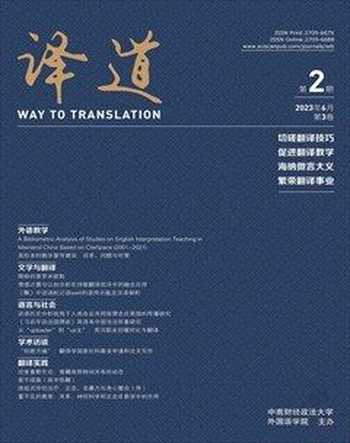体验式伴侣治疗:正念、非暴力与身心整合(序)
Rob Fisher
譯 者:严雪梅 吴于勤
本书简介|哈科米治疗方法融合了东方的正念觉知(mindfulness)与西方心理学的科学方法。治疗师设计正念觉知实验,邀请个人探索身体的动作与习惯性的模式。这些动作、模式隐藏着许多潜意识的核心信念,影响着我们的日常生活、亲密关系以及自我认同。哈科米可以让我们带着正念觉知,来探寻、看清亲密关系中潜在的情绪模式和内心创伤,发现自己和伴侣内心深处的需求和渴望,带来根本的疗愈。
序
体验式伴侣治疗代表了一种全新的伴侣心理治疗方法。本书中描述的方法和原则与其它传统方法相比有很大的区别,即心理治疗方法的一个最基本的层面在此受到质疑:治疗师的角色。
通常,治疗师和来访者的工作基于一个模式(有时称为医疗模式),其中来访者的主要任务是向治疗师展示自己或提供关于自己的资料,治疗师帮助来访者理解他们的世界。治疗师提示和鼓励来访者展示症状、历史、梦境、关于当前事件的报告以及对这些事件的感受等等。有了这些资料,治疗师的任务是诊断问题并提供治疗,治疗方法各种各样,从洞察到精神药物等等。这种模式需要来访者去找专家,呈现自己,并接受治疗。这类心理治疗就像一次谈话——严肃的谈话,没错,仅仅是一次谈话。
本书中描述的方法是完全不同的。费若朴(Rob Fisher)邀请来访者在正念觉知的特殊意识状态下进行实验并探索他们的体验。结果充满惊喜。正如本书所言,治疗师的部分作用是找到合适的唤起实验,让伴侣在自我观察的状态下参与其中。许多实验都是基于伴侣的非言语行为,即他们都有反应但通常没有意识到的行为,比如轻微的转头、眼神冷漠、说话断断续续或节奏缓慢。通过结合正念觉知的实验,来访者可以发现大量信息,关于他们是谁以及他们是如何无意识地影响彼此的关系。费若朴从自身的临床实践中提供了许多案例来说明如何做到这一点。他非常详细地描述了他使用的技术。
在体验式治疗的过程中,人们使用正念觉知作为自我观察的方法,接触到深层次的无意识材料,情绪和记忆以完全非暴力的方式很快被唤起。这种方法很大程度上依赖于治疗师的观察技能。本书中有一个章节专门讲述如何学习和磨练这种特殊的技能。这些实验是基于简单、可观察的现象,如手势、姿势、语调和伴侣互动关系的其他躯体信号。这些都是每个个体内部构建的外显迹象。因为这种方法具体且即时,治疗进行得很快,并且有切实的效果。当治疗师知道要寻找什么以及如何在正念觉知中创设实验时,很快便会有重大的发现。当来访者的发现是基于真实的体验时,几乎就不需要解释、讲述和长时间的对话。有效的实验得出的体验结果,有时被称之为不容置疑的事实。体验是可以被谈论的,这一点不可否认。体验式心理治疗涉及丰富的体验。来访者不参与对话。他们不是被动接受治疗师的解析。治疗师邀请他们主动进行自我探索。
费若朴认为来访者的主要任务是自我研究,而治疗师的主要任务是协助他们。在伴侣治疗中,来访者不仅自我发现,他们还发现对方以及彼此之间的关系。这里有一个微妙的责任转移。治疗师仍然在努力理解来访者,但更多的是扮演助力者的角色,而不是专家和顾问。治疗师的技能是帮助来访者获得非常有意义的体验。来访伴侣在他们的自我发现过程中起着主要作用。这样的工作需要勇气,因为正念觉知是一种涉及自发脆弱的意识状态。鉴于这种脆弱性,治疗工作必须是非暴力的。任何暴力,即使是以最不易察觉的形式,都会严重损害来访者与其潜意识的合作。
在这种方法中,治疗师致力于赢得信任。费若朴在本书中描述了如何有意识地、深思熟虑地实现这一点。没有欺骗或操纵,没有交易的把戏。只有对来访者真正的倾听、理解和尊重。
本书中讨论的原则和方法有一部分是基于我自己的工作。因此,针对费若朴所写的东西,我谈谈自己的感受或许比较合适。就我个人而言,我无比激动并心存感激。费若朴对体验式心理治疗进行了非常有用的延申和拓展。以上在本书中得到了很好地阐释。 我很自豪也很高兴地跟大家分享:这本书内容清楚易懂、全面透彻、组织得当。对心理治疗领域贡献巨大。
朗·克兹
俄勒冈州,阿什兰市
版权说明:译者受中国纺织出版社的委托对该书进行了翻译,目前尚未出版。发表在本刊的这篇译文为书的序言部分,已经经过出版社同意,不存在版权争议。
作者简介:Rob Fisher,美国心理学家。
译者简介:严雪梅,武汉晴川学院外国语学院副教授,翻译硕士,研究方向:翻译理论与实践。吴于勤,中南财经政法大学外国语学院讲师,翻译硕士,研究方向:翻译理论与实践、心理学。
FOREWORD
Working Experientially with Couples represents a significantly new approach to the practice of psychotherapy with couples. The differences between the methods and principles described in this book and other, more traditional approaches are profound. One of the most fundamental aspects of psychotherapeutic method is called into question here: the role of the therapist.
Typically, therapist and client operate from a model (sometimes called the medical model) in which the clients primary task is to present themselves or data about themselves to a therapist who then helps them make sense of their world. Clients are prompted to present symptoms, history, dreams, reports about current events, feelings about those events, and so on. Given this data, the therapists task is then to diagnose the problem and provide treatment, which could be anything from insights to psychoactive drugs. This model entails going to an expert, presenting oneself, and receiving a treatment. As a result, psychotherapy is conducted very much like a conversation—a serious conversation, yes, but a conversation nonetheless.
The approach described in this book is radically different. Fisher invites clients to explore and experiment with their experience in a special state of consciousness called “mindfulness.” The results are full of surprises. Part of the therapists function, as discussed in this book, is to find appropriate evocative experiments in which the couple can engage while in this state of self-observation. Many such experiments are based on the nonverbal behaviors of the couple, behaviors they are both reacting to but are usually not aware of, like the slight turn of the head, the hardening of the eyes, the staccato or adagio pace of their speech. Using this combination of experiments and mindfulness, clients can discover a tremendous amount about who they are and how they are unconsciously affecting their relationships. Fisher provides numerous examples from his own clinical practice of how this is done. He describes the techniques he uses in great detail.
In the course of this therapy, people come in contact with profound levels of unconscious material. Using mindfulness as the method of self-observation, emotions and memories are evoked very quickly, in a completely nonviolent way. This method relies heavily on the observational skills of the therapist. A whole chapter is devoted to learning and honing this particular skill. These experiments are based on simple, observable phenomena such as gestures, postures, tone of voice, and other physical aspects of the couples relationship. These are all outward signs of each individuals internal organi?zation. Because the method is concrete and immediate, therapy proceeds quickly and has quite an impact. When the therapist knows what to look for and how to create experiments in mindfulness, discoveries are immediate and profound. When the clients discoveries are based on actual experiences, there is very little need for explanations, stories, and long conversations. The experiential outcome of good experiments is, what is sometimes called, the unarguable truth. Experience can be talked about, but it is simply illogical to disagree with it. This approach is rich in experiences. Clients are not engaged in conversations. They are not given interpretations. They are invited to explore.
Fishers work presupposes that the clients main task is self-study and that the therapists main task is to assist in that. In the case of couples, they not only discover themselves; they discover each other and their relationship. There is a subtle shift of responsibility here. The therapist is still working to understand clients, but more in the role of facilitator than expert and advisor. The therapists skill is in helping clients access deeply meaningful experiences. Couples take the main role in their own self-discovery. Such work takes courage, because mindfulness is a state of consciousness involving voluntary vulnerability. Given this vulnerability, it is essential that the work be nonviolent. Any violence, even in its subtlest forms, will significantly compromise the cooperation of the clients unconscious.
In this method, the therapist works to earn trust. Fisher describes how to consciously and deliberately go about accomplishing this. There is no deception or manipulation, no “tricks of the trade.” Only the real work of listening, understanding, and respecting the people with whom he works.
The principles and methods discussed in this book are based in part on my own work. Therefore, it may be appropriate that I say something about how I feel about what Rob Fisher has written. Personally speaking, I am excited and grateful. Rob has created a marvelously useful extension of the experiential method. And hes written about it beautifully. The book is clear, thorough, and very well organized. Its a great contribution. And Im proud and happy to tell you so.
Ron Kurtz
Ashland, Oregon

